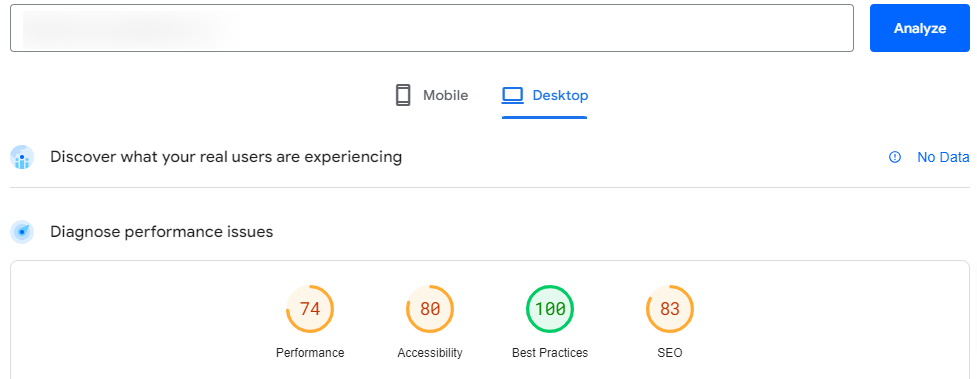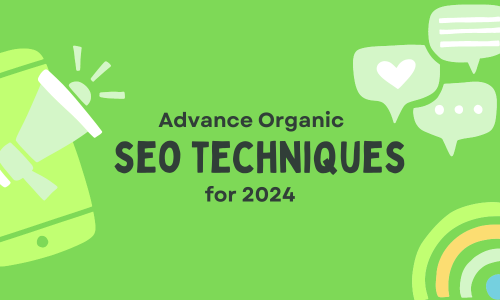In today’s fast-paced digital world, staying ahead of the SEO curve is not just a competitive advantage; it’s a necessity for businesses looking to thrive online. As search engine algorithms evolve and user behaviors shift, mastering advanced SEO techniques becomes essential for maximizing visibility, driving targeted traffic, and ultimately, achieving digital success.
But fear not! We’re here to demystify the world of advanced organic SEO and equip you with the tools, strategies, and insider knowledge you need to dominate the SERPs (search engine results pages) in 2024 and beyond.
Let’s dive in and unlock the secrets to mastering SEO in the digital age!
1. Identify and Fix Keyword Cannibalization Issues
Keyword cannibalization, a prevalent SEO concern, occurs when multiple pages on your website compete for the same keyword, inadvertently diluting their individual ranking potential.
For instance, consider a website selling running shoes that inadvertently create separate pages optimized for the keyword “best running shoes.” If the website has multiple pages optimized for the same keyword, such as a product page, a blog post, and a category page, it creates confusion for search engines about which page to rank for that specific keyword.
As a result, the website’s overall search visibility and organic traffic may suffer, as search engines may struggle to determine the most relevant page to display in search results.
In such cases, consolidating or optimizing existing pages to target different keywords or refining the content and purpose of each page can help alleviate keyword cannibalization issues and improve search engine rankings.
2. Use Animated Images to Improve Time On-Site
Animated images, such as GIFs, can captivate users and enhance engagement, leading to increased time spent on your site. Integrating animated images into your content can provide visual appeal and entertainment value, encouraging visitors to linger longer on your pages.
For example, you could use animated images to demonstrate product features, illustrate step-by-step tutorials, or add a touch of personality to your brand.
By leveraging animated images strategically, you can effectively improve time-on-site metrics and enhance user experience, ultimately boosting your site’s SEO performance.
3. Discover Keywords in the “People Also Ask” Section
Exploring “People Also Ask” (PAA) queries is a valuable strategy for uncovering related keywords and expanding your content’s relevance.
By analyzing the questions that appear in the “People Also Ask” section of search engine results pages (SERPs), you can identify common queries related to your target topic or keyword. These questions often reflect user intent and provide insight into what information users are seeking.
Incorporating these PAA keywords into your content allows you to address user queries comprehensively and improve your chances of appearing in featured snippets.
Additionally, optimizing your content for PAA keywords can enhance your site’s visibility and attract more organic traffic by capturing users’ curiosity and addressing their specific inquiries.

4. Reoptimize Underperforming Content
Reoptimizing underperforming content is a strategic approach in SEO aimed at revitalizing existing web pages that are not meeting performance expectations.
This technique involves reviewing and analyzing underperforming content to identify areas for improvement, such as outdated information, poor keyword targeting, or suboptimal formatting.
Once identified, updates and enhancements are made to the content, including revising and expanding the text, optimizing keywords, updating visuals, and improving overall user experience. By reoptimizing underperforming content, websites can breathe new life into their existing assets, increase organic visibility, drive more traffic, and ultimately achieve better results in search engine rankings.
5. Maximize SERP Real Estate
Maximizing SERP (Search Engine Results Page) real estate involves optimizing your content to occupy as much space as possible in search engine results, increasing visibility and click-through rates. Here are some strategies to achieve this:
- Featured Snippets: Target featured snippets by providing concise, well-structured answers to commonly asked questions related to your content. Optimize your content to match the format and intent of featured snippet queries to increase the likelihood of earning this coveted position.
- Knowledge Panels: Claim and optimize your Knowledge Panel to provide users with essential information about your business or brand directly in the search results. Ensure that your Knowledge Panel is accurate, up-to-date, and comprehensive to enhance your brand’s credibility and visibility.
- Site Links: Optimize your website’s structure and internal linking to encourage search engines to display site links in the search results. Site links provide users with quick access to specific sections or pages of your site, increasing the likelihood of clicks and engagement.

- Rich Snippets: Implement structured data markup to enhance your search listings with rich snippets, such as star ratings, product information, event details, and more. Rich snippets attract attention and provide users with valuable information, increasing click-through rates and driving qualified traffic to your site.

- Video and Image Carousels: Create and optimize video and image content to appear in video and image carousels on the SERP. Optimize your multimedia content with relevant keywords, titles, and descriptions to improve visibility and attract users’ attention in these interactive carousels.
By implementing these strategies to maximize SERP real estate, you can increase your content’s visibility, attract more organic traffic, and establish a stronger online presence in search engine results. Continuously monitor and refine your approach to adapt to changes in search algorithms and user behavior, ensuring ongoing success in maximizing SERP visibility.
6. Claim Dead Links to Competitor Pages
Claiming dead links to competitor pages is a savvy SEO tactic that involves identifying broken links on competitor websites and proposing your own relevant content as a replacement.
First, use tools like Ahrefs or SEMrush to find broken links on competitor sites that point to content related to yours.
Next, create high-quality content on your site that can serve as a suitable replacement for the dead link.
Then, reach out to the website owners, politely informing them of the broken links and offering your content as a solution. Provide clear instructions and follow up if necessary. This method can earn valuable backlinks, enhance your website’s authority, and drive more organic traffic.
7. Leverage Strategic Internal Linking
Strategic internal linking is a foundational element of advanced SEO, drawing insights from leading industry sources. By structuring content into thematic silos, optimizing anchor text, and establishing hierarchical depth, websites can bolster their authority and improve user experience.
Regular audits and updates ensure ongoing relevance and effectiveness, as recommended by top SEO authorities. This approach not only enhances search engine rankings but also facilitates seamless navigation and access to valuable content for users.
8. Capture Featured Snippets
Getting your website featured at the top of Google’s search results might seem like a tough nut to crack, but there’s a clever tactic you can use: stealing featured snippets from your competitors.

Featured snippets are those neat little boxes that appear at the top of search results, providing quick answers to common questions. To steal one, start by studying the featured snippets that already exist for your target keywords.
Once you understand what makes a good featured snippet, it’s time to create your own content. Make sure your content directly answers popular queries in your industry and is easy to understand. Use clear headings, bullet points, and concise paragraphs to make your content stand out.
Next, optimize your content to match the format of existing featured snippets. This might mean using numbered lists, tables, or short paragraphs. The goal is to provide a clear and direct answer to the question being asked.
Finally, keep an eye on your competitors’ content. If you see a featured snippet you think you can beat, update your content accordingly.
By following these steps and continuously refining your approach, you can increase your chances of stealing featured snippets and getting your website noticed on Google. Adding screenshots of search results with featured snippets and your optimized content could help illustrate this process further.
9. Enhance Page Speed Optimization

Optimizing your website for page speed is crucial for enhancing user experience and boosting search engine rankings. To achieve this, start by compressing images and enabling browser caching to reduce loading times for returning visitors.
Additionally, consider implementing content delivery networks (CDNs) to distribute your content globally and minimize latency. Streamlining your code, enabling Gzip compression, and optimizing server response times further contribute to faster page loading.
Lastly, adopting lazy loading techniques ensures that non-essential content is loaded only when needed, prioritizing critical elements for a seamless user experience.
By focusing on page speed optimization, you can significantly improve user satisfaction, decrease bounce rates, and ultimately drive more traffic to your website.
10. Create a Website Optimized for Mobile Devices
Creating a mobile-friendly website is crucial for enhancing user experience and boosting search engine rankings. Ensure your site is responsive, optimizing its layout for different devices.
Prioritize mobile optimization by improving loading speed, simplifying navigation, and leveraging mobile-specific features. Regularly test your site across devices to maintain usability.
A mobile-friendly website signals to search engines that your site is modern and accessible, driving more traffic.
11. Eliminate thin content
Eliminating thin content is a vital strategy in advanced SEO to improve website quality and search engine rankings. Thin content refers to pages with little substantive value, often containing only a few sentences or minimal information.
To address this, conduct a thorough content audit to identify and remove or consolidate thin pages. Focus on creating comprehensive, informative content that provides value to users and aligns with search intent.
By eliminating thin content and prioritizing quality, you can enhance user experience, increase engagement, and boost your website’s authority and visibility in search engine results.
12. Build Out Topic Clusters
Building out topic clusters is a powerful strategy in advanced SEO that involves organizing your website’s content around pillar pages and related subtopics.
Start by identifying broad topics or themes relevant to your industry or niche. These will serve as your pillar pages, providing comprehensive coverage of the main topic.
Then, create supporting content or subtopics that delve deeper into specific aspects of each pillar topic. Interlink these subtopic pages with the corresponding pillar page using relevant anchor text to create a cohesive cluster of related content.
This strategic approach not only improves site structure and navigation but also signals to search engines the authority and expertise of your website on specific topics. By implementing topic clusters, you can enhance your website’s visibility, increase organic traffic, and establish your authority in your niche.
Conclusion
In the dynamic world of 2024, mastering advanced organic SEO techniques is crucial for online success. By implementing strategies like resolving keyword cannibalization and optimizing content, businesses can boost their search engine rankings and attract more traffic.
However, navigating SEO complexities can be daunting. That’s where SEO experts come in. With their expertise, businesses can gain strategic insights and tailored solutions to optimize their online presence effectively.
So, partner with SEO experts to elevate your strategy and unlock your business’s full potential in organic search. With their help, you can navigate the ever-changing SEO landscape with confidence and drive long-term growth.

